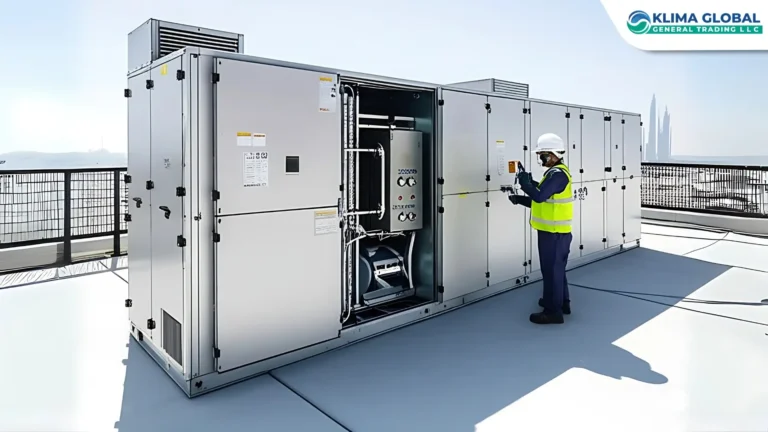
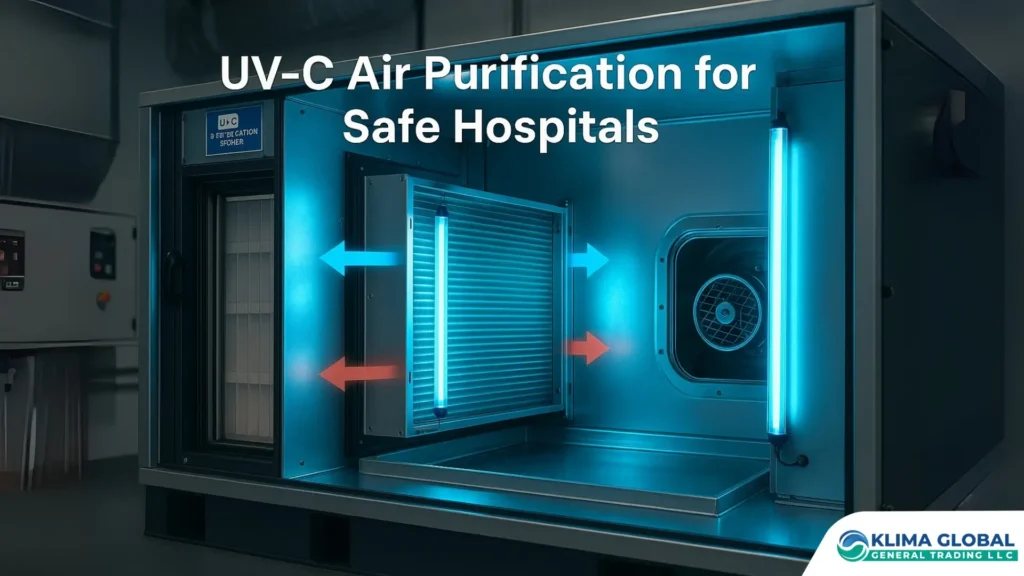
Hospitals across the GCC region are constantly challenged to maintain pathogen-free indoor air to protect patients and healthcare workers. Post-pandemic, infection control has become a priority, leading to the adoption of advanced technologies like UV-C Air Purification. This article explores how UV-C sterilization and advanced purification methods enhance hospital HVAC systems, their benefits for infection control, and best practices for implementation.
Discover our Hygienic AHUs for Hospitals equipped with integrated UV-C solutions for advanced infection control in GCC healthcare facilities.
What is UV-C Air Purification and How Does it Work?
UV-C Air Purification uses ultraviolet light at 254 nanometers to neutralize microorganisms in the air and on HVAC surfaces:
UV-C light disrupts the DNA/RNA of bacteria, viruses, and fungi, preventing them from reproducing.
Installed in air handling units (AHUs) or ductwork, UV-C lamps continuously disinfect circulating air.
Effective against airborne diseases such as influenza, SARS-CoV-2, tuberculosis, and other hospital-acquired infections.
This germicidal process is chemical-free and complements filtration, making it ideal for healthcare environments where air cleanliness is paramount.
Advanced Air Purification Technologies for Hospital HVAC
Modern hospital HVAC systems often combine UV-C Air Purification with other advanced technologies:
UV-C Coil Irradiation: Keeps cooling coils free of biofilm, improving heat transfer and energy efficiency.
Upper-Air UV Disinfection: UV-C fixtures in room ceilings disinfect air in occupied spaces safely.
In-Duct UV-C Systems: Installed inside ducts or AHUs to sterilize air as it passes through.
Plasma/Ionization: Releases charged ions that deactivate pathogens and neutralize VOCs.
Photocatalytic Oxidation (PCO): Combines UV light with a catalyst to break down pollutants.
HEPA Filters: Often used with UV-C to physically capture particles and microorganisms.
By combining these methods, hospitals achieve comprehensive, multi-barrier air purification.
Learn how HEPA Filters in Healthcare HVAC work alongside UV-C systems to provide maximum air sterilization in hospitals.
Benefits of UV-C and Advanced Purification in Healthcare
The use of UV-C Air Purification in hospital HVAC systems provides several benefits:
Improved Infection Control: Reduces airborne transmission of pathogens, lowering the risk of hospital-acquired infections (HAIs).
Enhanced Coil Cleanliness: Prevents microbial growth on coils, sustaining efficiency and reducing maintenance.
Energy Savings: Clean coils reduce fan and cooling energy consumption by up to 20%.
Continuous Protection: Operates 24/7 without harmful chemicals, providing consistent sterilization.
Cost-Effective: Extends HVAC component life and reduces filter replacement frequency.
Standards and Guidelines for UV-C Use in Hospitals
Implementing UV-C Air Purification must follow recognized safety and healthcare standards:
ASHRAE UVGI Guidelines: Provide design criteria for UV-C lamp placement and intensity.
CDC Recommendations: Recognize UVGI (Ultraviolet Germicidal Irradiation) as effective for air disinfection.
WHO Airborne Infection Control: Suggests UV-C as a supplemental technology in high-risk environments.
GCC Regulations: UAE’s DHA and Saudi MOH endorse UV-C solutions in isolation rooms and operating theatres.
These guidelines ensure safe and effective use of UV-C in hospital HVAC systems.
Integration of UV-C with ACS CLIMACS AHUs
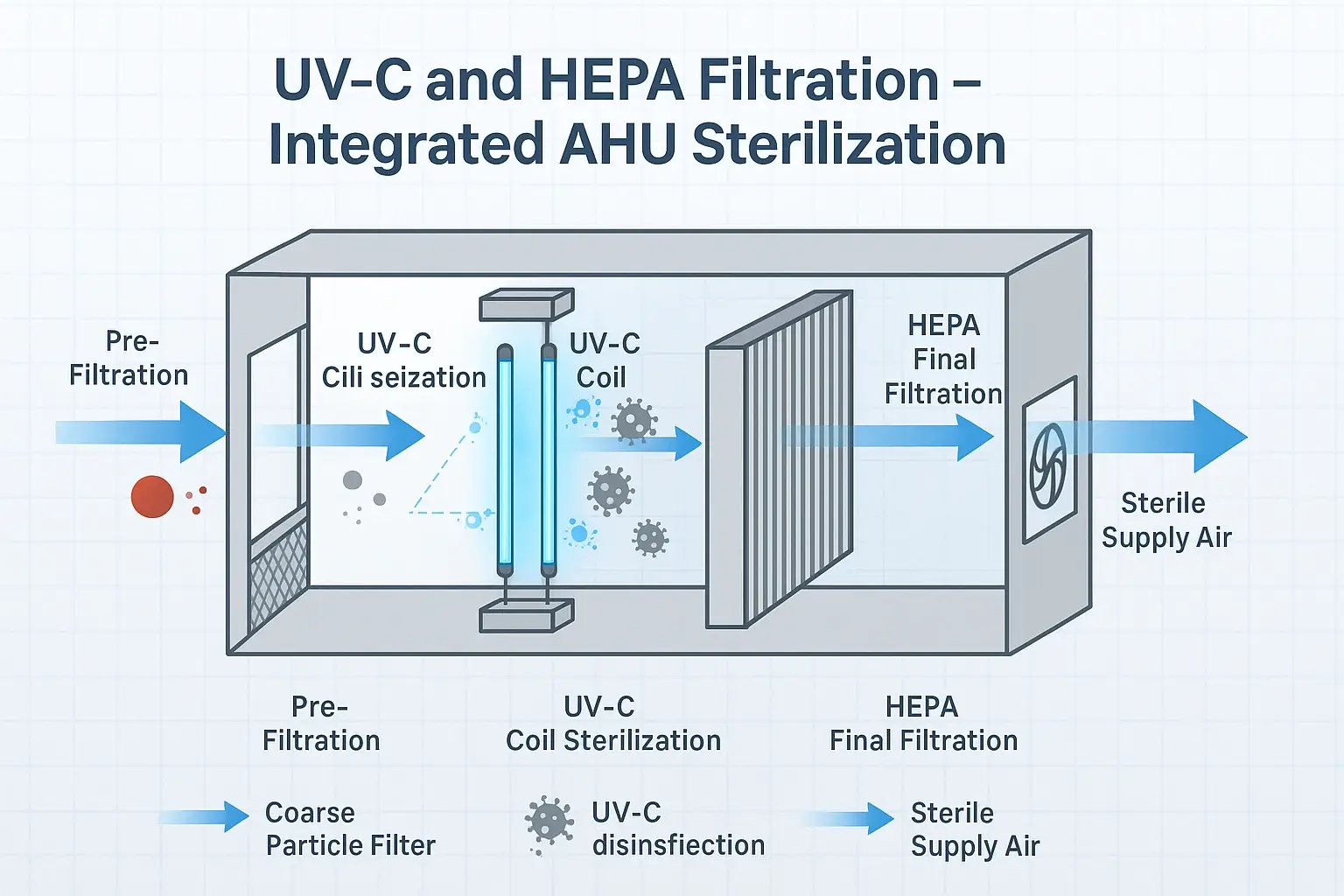
ACS CLIMACS Air Handling Units from Klima Global are designed to integrate UV-C Air Purification seamlessly:
Built-In UV-C Modules: Factory-installed lamps positioned for optimal coil and air disinfection.
Combined HEPA + UV-C Solutions: Provide both physical filtration and germicidal sterilization.
Automation and Monitoring: Sensors track UV intensity and operational status via BMS integration.
Proven GCC Installations: Deployed in UAE and Saudi hospitals for enhanced infection control.
This integration ensures hospitals benefit from safe, reliable, and energy-efficient UV-C solutions.
Explore our full suite of Healthcare HVAC Solutions designed for safe, efficient, and certified hospital air handling systems across GCC.
Best Practices for Implementation and Maintenance
For effective UV-C Air Purification, hospitals should follow these practices:
Proper Lamp Placement: Position UV-C lamps near coils or within AHU plenums for maximum exposure.
Routine Cleaning: Prevent dust buildup that reduces UV-C intensity.
Scheduled Lamp Replacement: UV-C lamps degrade over time; replace annually or as specified.
UV Intensity Verification: Use sensors or meters to ensure adequate germicidal dose.
Staff Training: Maintenance personnel should be trained for safe lamp handling and replacement.
Implementing these practices ensures long-term reliability and safety.
Download the free Preventive Maintenance Checklist for Hospital AHUs to ensure proper servicing and long-lasting UV-C air purification systems.
Summary: UV-C Air Purification for Safe Hospitals
UV-C technology has become a cornerstone of modern hospital HVAC design in the GCC. By combining UV-C Air Purification with HEPA filtration and advanced purification technologies:
Hospitals achieve superior infection control
HVAC systems operate more efficiently and cost-effectively
Patients and staff benefit from cleaner, safer indoor air
Partnering with Klima Global ensures access to certified AHUs, expert engineering, and proven UV-C solutions tailored to GCC healthcare needs.
Frequently Asked Questions (FAQ)
Is UV-C safe for hospital patients and staff?
Yes, when installed properly inside AHUs or ducts, UV-C exposure to occupants is eliminated.
Can UV-C replace HEPA filters in HVAC systems?
No, UV-C complements HEPA filters by killing microorganisms; it does not physically remove particulates.
How often should UV-C lamps be replaced in hospitals?
Typically every 9–12 months to maintain adequate germicidal output.
What are the energy savings with UV-C coil irradiation?
Up to 20% reduction in HVAC energy use due to cleaner, more efficient coils.
Upgrade hospital air safety with UV-C and advanced purification.
Klima Global provides certified HVAC solutions with UV-C integration for GCC healthcare facilities.
Get Expert Consultation NowShare this post
Related Posts

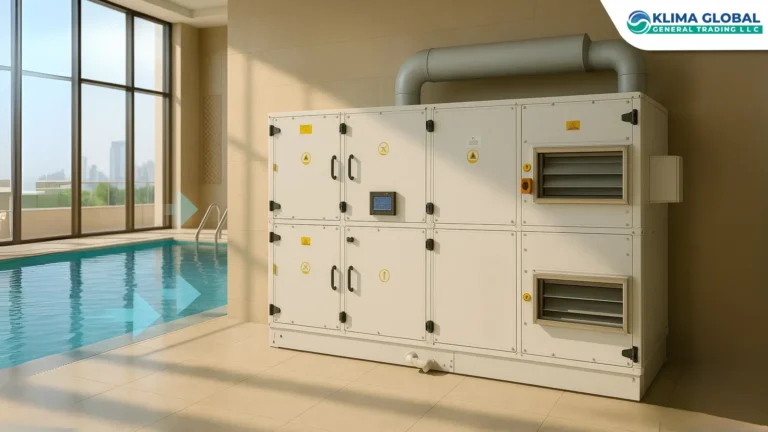
Pool Dehumidifier Supplier in UAE & GCC | Package Type
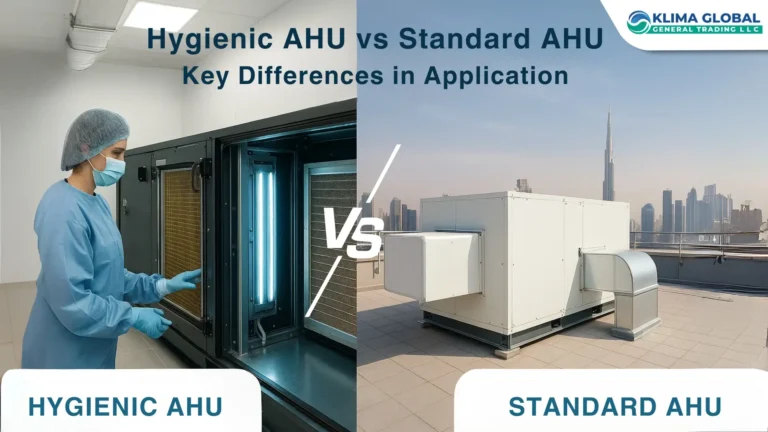
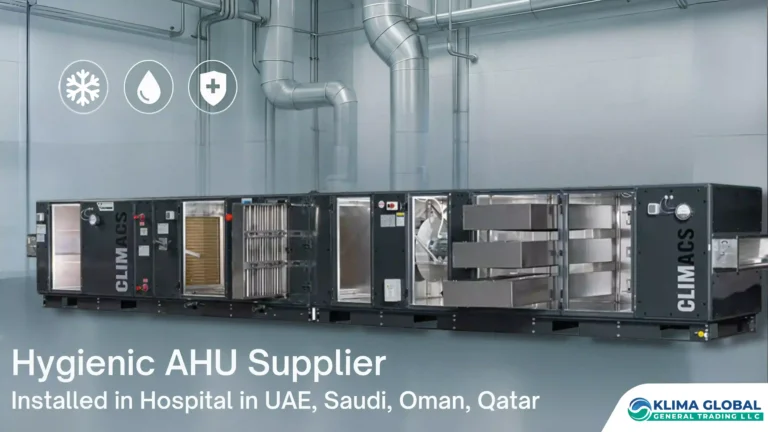
Hygienic Air Handling Unit Supplier in UAE & GCC
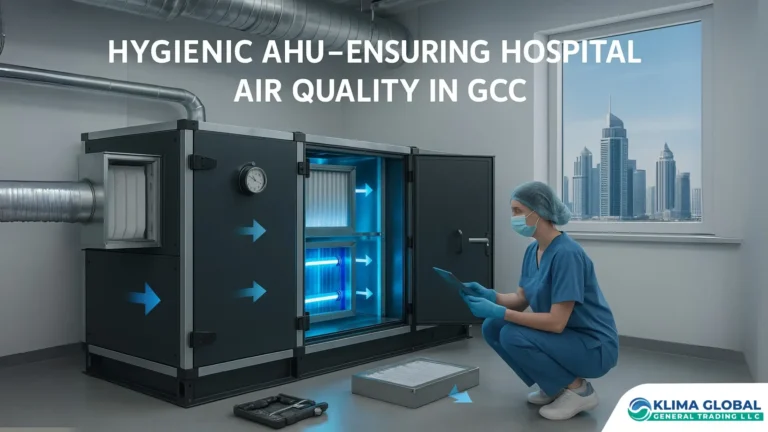
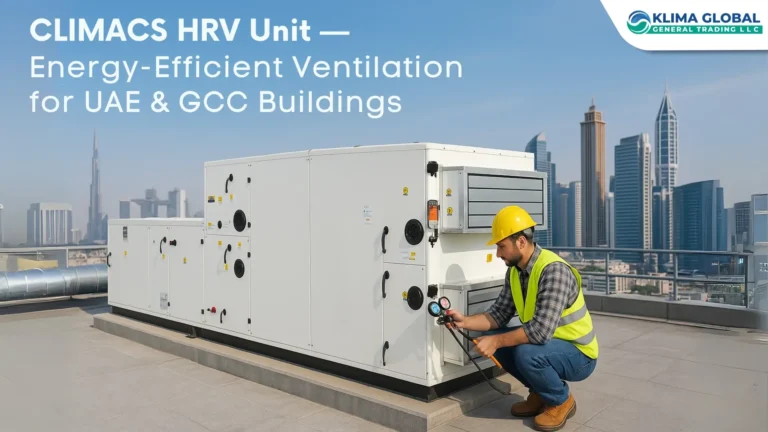
Heat Recovery Ventilation Supplier UAE | Klima Global
Latest Posts

Fresh Air Handling Units: Components, Operation & Maintenance

Pool Dehumidifier Supplier in UAE & GCC | Package Type


Hygienic Air Handling Unit Supplier in UAE & GCC


Heat Recovery Ventilation Supplier UAE | Klima Global
